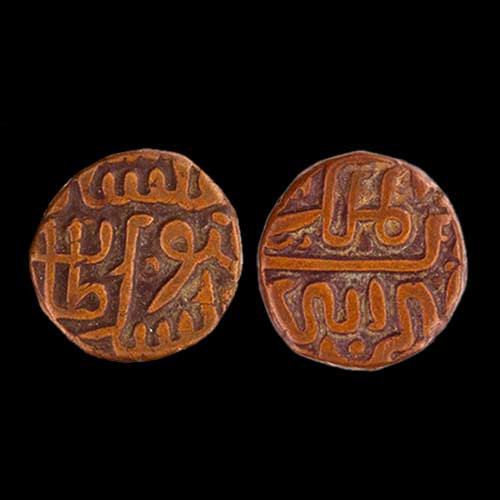Coinage of the Malwa Sultanate: Hissam al-Din Hushang Shah
2025-07-17 Thu
The Malwa Sultanate was established in 1392 CE and was initially ruled by the Khaljis, of Afghan origin, in present-day Madhya Pradesh and southeastern Rajasthan. From 1518, it became a vassal of the Gujarat Sultanate until it was captured by the Mughals under Akbar from 1562 CE onward.Dilawar Khan, appointed governor of Malwa by the Delhi Sultanate, declared independence in 1392 CE, founding the Malwa Sultanate. However, he did not formally assume control until 1401 CE.
Initially, Dhar served as the capital of the new kingdom, but it was later shifted to Mandu, which was renamed Shadiabad, meaning "The City of Joy." The coinage of the Malwa Sultanate is varied and highly interesting for collectors. Following Dilawar Khan's death, his son Alp Khan ascended the throne in 1405 CE, taking the title Hissam al-Din Hushang Shah. He ruled until 1435 CE (AH 808–838).
Hissam al-Din Hushang Shah issued coins in gold, silver, and copper. His copper falus weighed between 3.7g and 4.6g, while the copper half-falus weighed approximately 1.8g, minted at Dar al-Mulk Shadiabad. The obverse bears the Persian legend "Hushang Shah Al-Sultan," and the reverse bears the Persian legend "Dar Al-Mulk Shadiabad." Half-falus coins are very rare.
Latest News
-
Ghiyath Shah as Heir Apparent
2025-09-25 ThuGhiyath Shah was the ruler of the Malwa Sultanate, reigning from 1456 to 1500. From 1456 to 1469, he...
-
Malwa Sultan Mahmud Shah Silver Coins
2025-09-11 ThuMalwa Sultan Mahmud Shah minted silver coins in round and square flans. <br><br> For round coins,...
-
Malwa Sultan Mahmud Shah Billon coin
2025-08-26 TueMalwa Sultan Mahmud Shah's billon coins followed three weight standards: 100 rati, 96 rati, and 80 r...
-
Fascinating Archaeological Facts on Postage Stamps - 91
2025-08-23 SatRhinoceros is one of the oldest land mammal species existing in India. There are five species of rhi...
-
Fascinating Archaeological Facts on Postage Stamps - 90
2025-08-23 SatUthiramerur, a Village in Kanchipuram, Tamil Nadu, is notable for its Temple inscriptions that descr...

